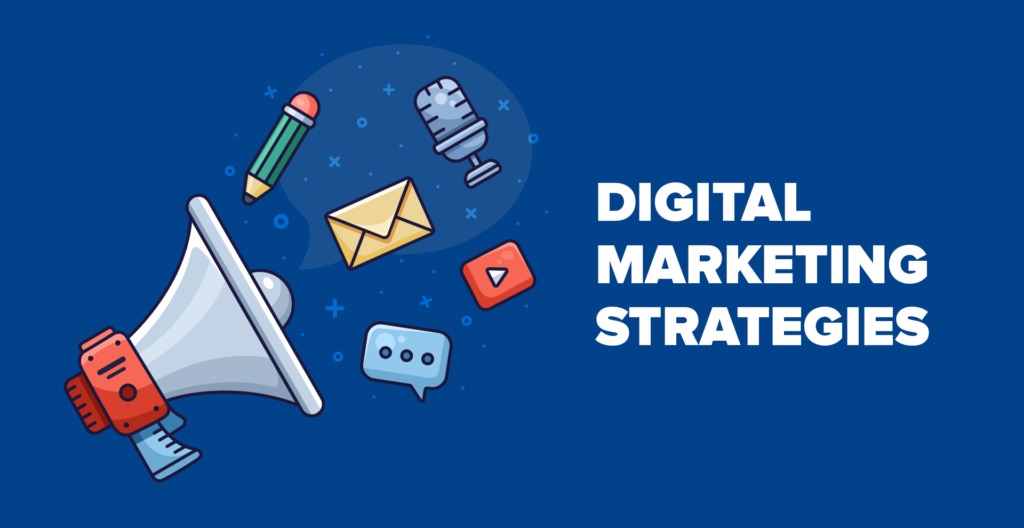
Digital Marketing Strategy from Scratch
Building a digital marketing strategy from scratch can feel intimidating — but it doesn’t have to be. Whether you’re starting a new business, launching a personal brand, or simply wanting to improve your online presence, a clear, well-thought-out strategy is the foundation of success.
In this guide, we’ll break down the process into simple, actionable steps to help you Digital Marketing Strategy from Scratch that drives real results.
A digital marketing strategy is a carefully planned approach to promoting a brand, product, or service through online channels. It involves setting clear objectives, understanding the target audience, and utilizing a mix of platforms such as social media, search engines, email marketing, and websites to reach potential customers. A strong digital marketing strategy aligns with a company’s overall goals and adapts to market trends and customer behaviors. It often includes tactics like content marketing, search engine optimization (SEO), paid advertising, and data analytics to measure and refine performance. Ultimately, an effective digital marketing strategy drives engagement, builds brand loyalty, and increases conversions.
Step 1: Define Your Goals
Before anything else, you need to be crystal clear about what you want to achieve. Your goals will shape every decision you make, from the platforms you use to the content you create.
Use the SMART framework to guide your goal-setting:
Specific – Be clear about what you want to accomplish.
Measurable – Attach numbers to your goals.
Achievable – Stay realistic based on your resources.
Relevant – Align goals with your overall business objectives.
Time-bound – Set a deadline.
Example: Instead of saying “I want more website traffic,” say “I want to increase website traffic by 30% within 6 months.”
Step 2: Understand Your Audience
Your marketing efforts won’t work unless you know who you’re targeting. Take time to build detailed buyer personas — fictional representations of your ideal customers.
Consider:
Age, gender, location
Occupation and income
Interests, habits, and challenges
Where they spend time online (Instagram? LinkedIn? TikTok?)
What problems your product or service solves for them
Pro Tip: Use tools like Google Analytics, Facebook Audience Insights, or simply run customer surveys to gather real data.
Step 3: Analyze the Competition
A smart strategy doesn’t exist in a vacuum. You must understand who else is competing for your audience’s attention.
Conduct a competitive analysis:
What digital platforms are your competitors using?
What kind of content do they produce?
How are they engaging their audience?
Where are they succeeding — and where are they falling short?
Tools like SEMrush, Ahrefs, and SimilarWeb can help you gather competitive insights fast.
By identifying gaps in their strategies, you can find opportunities to stand out.
Step 4: Choose the Right Digital Channels
Not every platform will be right for your brand. Based on your audience and goals, decide where to focus your efforts.
Here are some options:
SEO (Search Engine Optimization) – Long-term organic visibility on Google.
PPC (Pay-Per-Click Ads) – Immediate visibility via paid search and display ads.
Content Marketing – Blogging, podcasts, video content.
Social Media Marketing – Facebook, Instagram, LinkedIn, TikTok, etc.
Email Marketing – Build direct communication with leads and customers.
Tip: It’s better to do a few channels really well than to spread yourself too thin trying to do everything.
Step 5: Create High-Quality Content
Content is the fuel for digital marketing. It’s how you educate, entertain, and ultimately convert your audience.
Types of content to consider:
Blog posts
Social media posts
Infographics
Videos
Podcasts
Webinars
eBooks and whitepapers
Key: Match your content style to the platform and audience. A detailed eBook might work great for LinkedIn users but would flop on Instagram, where short videos perform better.
Pro Tip: Use a content calendar to plan, organize, and stay consistent with your publishing schedule.
Step 6: Set Your Budget
Your marketing budget will guide how much you can do and how fast you can scale.
Consider:
Ad spend (Google Ads, Facebook Ads, LinkedIn Ads)
Tools and software (e.g., scheduling tools, analytics platforms)
Outsourcing costs (e.g., freelance writers, designers, PPC specialists)
Content production (photography, video editing, etc.)
If you’re starting small, focus on organic growth channels like SEO and social media. If you have more to invest, combine organic efforts with paid ads for faster results.
Step 7: Build a Measurement and Analytics System
You can’t improve what you don’t measure.
Set KPIs (Key Performance Indicators) that align with your goals, such as:
Website traffic
Lead generation
Conversion rates
Customer acquisition costs
Email open and click rates
Use tools like:
Google Analytics for website tracking
Facebook Ads Manager for social ad performance
HubSpot for inbound marketing tracking
Hotjar for user behavior tracking
Review your data regularly to see what’s working and what needs adjustment.
Step 8: Launch, Test, and Optimize
Finally, it’s time to take action. Launch your campaigns — but remember, nothing will be perfect on the first try.
Use A/B testing to try different headlines, images, and CTAs (Calls to Action).
Experiment with different types of content and posting times.
Stay agile and tweak based on your analytics insights.
Digital marketing is a dynamic process. Brands that learn, adapt, and evolve will always outperform those that set a plan once and never change it.
Final Thoughts
So Creating a digital marketing strategy from scratch may seem overwhelming, but by following a structured process, you set yourself up for success. Define your goals, know your audience, choose your channels wisely, create amazing content, and always measure your results.
Remember: marketing isn’t about doing everything at once — it’s about doing the right things, consistently and intelligently.
